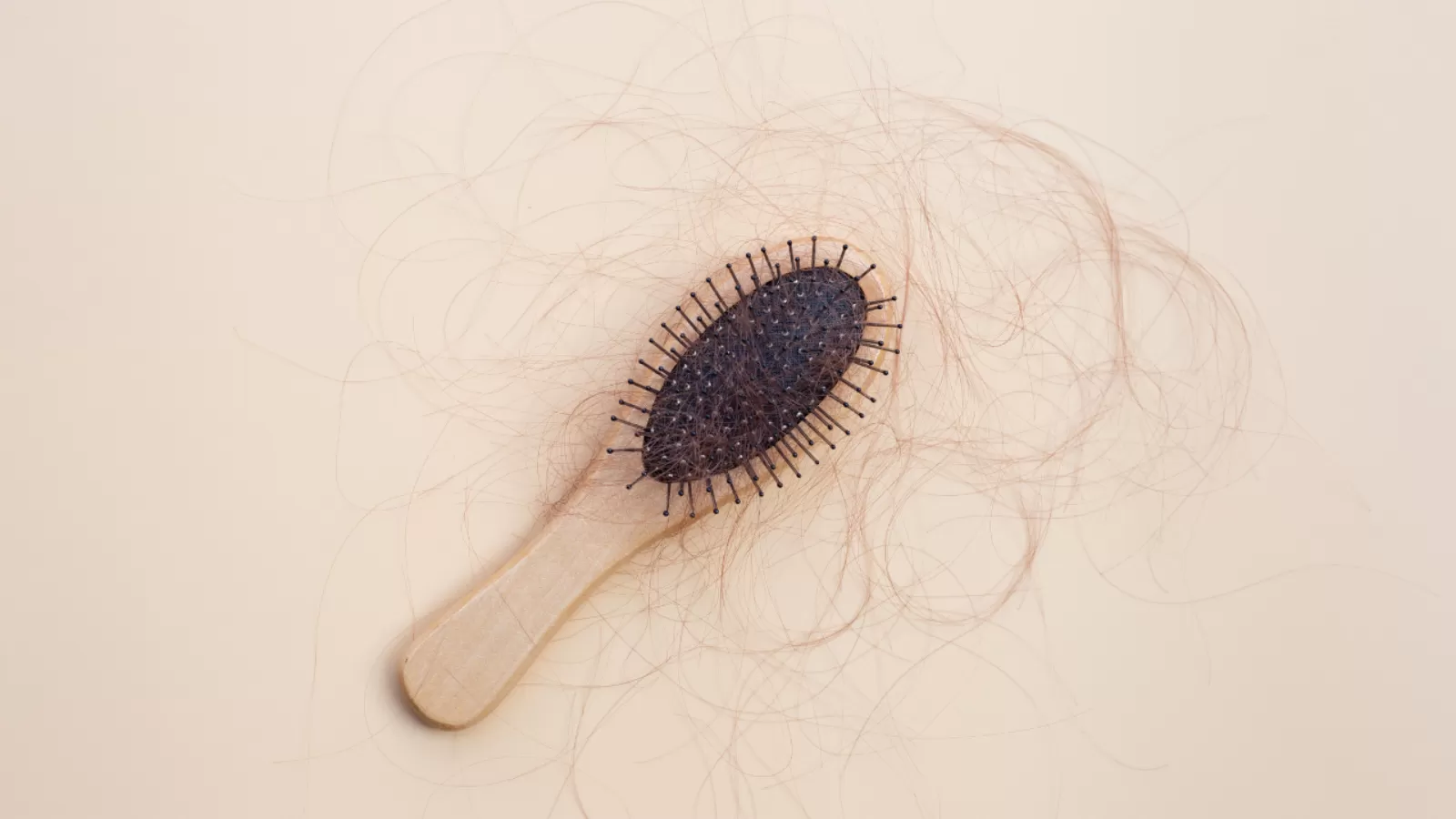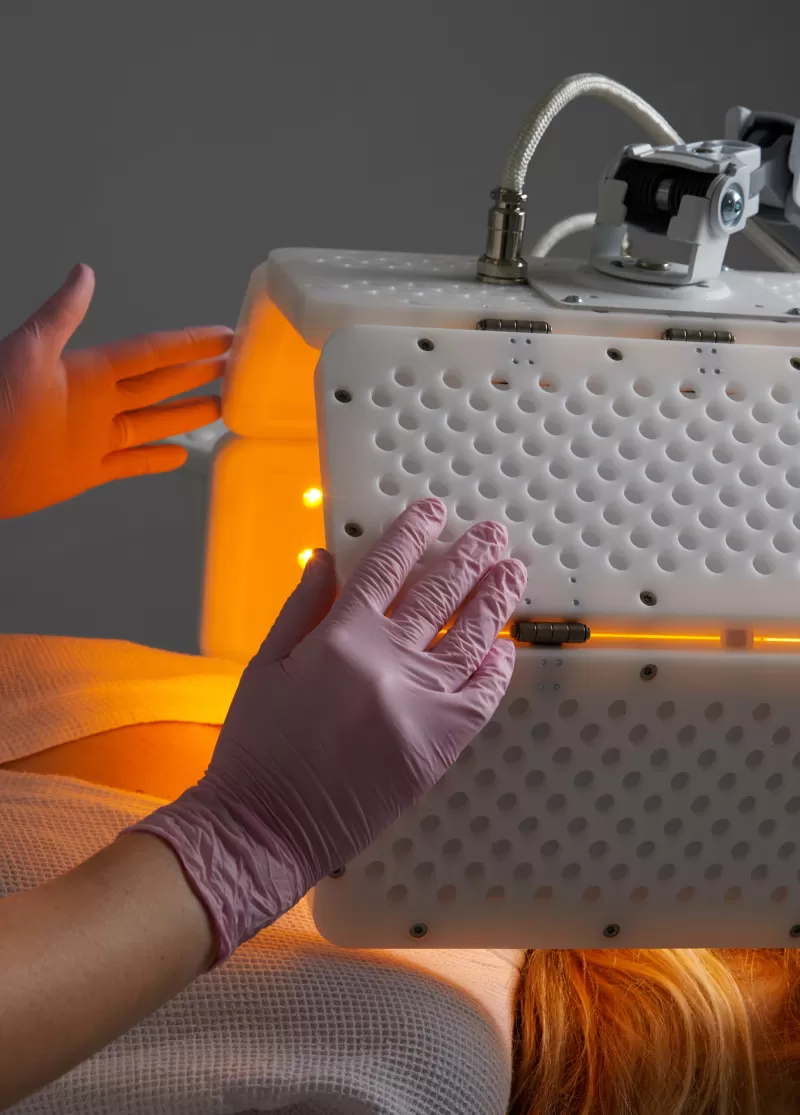Male Pattern Hair Loss
Male Pattern Hair Loss
Condition
What is Excessive Shedding?
What is Excessive Shedding?
Telogen effluvium is a form of hair loss. It is commonly associated with hair loss in women, but actually, the diagnosis can affect males too. Most people lose up to 100 hairs a day, but someone with telogen effluvium may lose up to 300 hairs. This is because more hair follicles than average move into the resting and shedding phase. You will notice less hair volume as a result of more hair being shed than is actually grown.
Telogen effluvium does not present with bald patches but rather a general thinning of hair.
What causes Excessive Shedding?
What causes Excessive Shedding?
In around 30% of people with telogen effluvium, doctors cannot find a cause. However, many different triggers have been found and you may realise you have experienced the following events that are now triggering your hair loss:
- Going through a severe illness
- Giving birth or going through an abortion
- Psychological stress (e.g. death of a loved one)
- Drastic changes in diet
- Large blood loss
- Surgical operation including FUE hair transplant surgery
- Traumatic accident (e.g. car crash)
- Medications (e.g birth control pill)
How can we help?
How can we help?
At The Hair Institute, Canberra’s first hair transplant clinic provides a range of services such as prescription medication, growth factor therapy, light therapy, and minimal invasive hair transplantation. Our experienced hair transplant doctor will provide a comprehensive assessment and bespoke treatment plan that address your hair loss concern.

FAQ
Have further questions or want to learn more?
What’s the difference between telogen effluvium and androgenic alopecia?
Telogen effluvium is a type of hair loss that involves rapid shedding of hair over a short period. It typically happens a few months after your body goes through something physically or emotionally stressful. It can also result from sudden hormonal changes. Hair loss due to telogen effluvium is usually temporary, and your hair often grows back without treatment once you no longer have that stress.
Androgenic alopecia (male pattern baldness and female pattern baldness) is a type of hair loss that’s more gradual than telogen effluvium. It’s not known exactly what causes androgenic alopecia. Without medications or treatment, hair loss due to androgenic alopecia is permanent.
What are the symptoms of telogen effluvium?
Most people become aware of losing hair in increased amounts. This is most noticeable after washing or brushing with more hair being found in the plug hole or on the hairbrush or comb. Some people will notice increased hair on the pillow in the morning or around the house. Usually there are no symptoms, but occasionally telogen effluvium can be accompanied by tenderness and altered sensations in the scalp, known as trichodynia.
What does telogen effluvium look like?
Telogen effluvium causes hair loss and thinning all over the scalp and differs from Female Pattern Hair Loss where hair is only lost on the top of the scalp. There are two main types of Telogen Effluvium – Acute Telogen Effluvium (up to 6 months) and Chronic Telogen Effluvium (lasting for more than 6 months)
How is telogen effluvium diagnosed?
Telogen effluvium is easy to recognize. A simple “pull test” can be conducted during your physical examination, in which your doctor will gently pull a small clump of 40 to 60 hairs between their fingers. Under typical conditions, they may only pull two to three hairs from your scalp. If you have telogen effluvium, they may pull at least four to six hairs from your scalp with white bulbs at the roots.
How can telogen effluvium be treated?
In most cases of telogen effluvium, you will notice your hair starts to grow back 3-6 months after the initial triggers are resolved. Some patients may notice to have success with stimulative treatment such as topical solution or PRP injection.
Is telogen effluvium hereditary?
Telogen effluvium is not inherited, and it can affect all age groups and both genders equally.
What is the outcome for telogen effluvium?
Regrowth usually occurs after removal of the trigger causing telogen effluvium. However, repeated episodes of acute telogen effluvium can sometimes evolve into female pattern hair loss.


